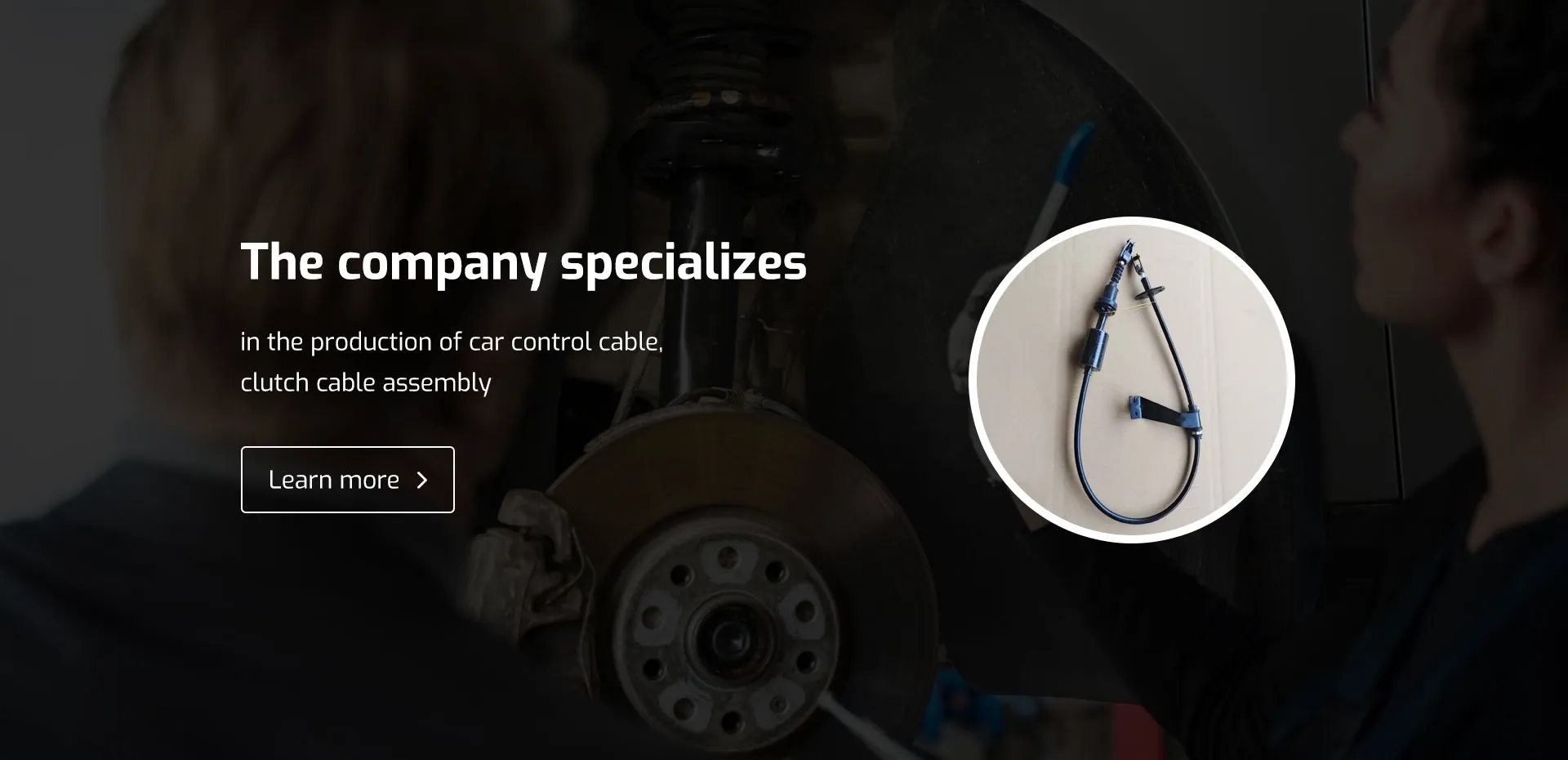throttle cable
Understanding Throttle Cables Function, Importance, and Maintenance
In the complex world of automotive engineering, the throttle cable plays a pivotal role in the operation of internal combustion engines. This seemingly simple component is crucial for controlling the engine's power output, directly affecting vehicle performance. Whether in a car, motorcycle, or any motorized vehicle, understanding the throttle cable’s function, importance, and maintenance can enhance both the driving experience and vehicle longevity.
What is a Throttle Cable?
The throttle cable is a mechanical linkage that connects the accelerator pedal to the throttle body or carburetor in an engine. When the driver presses the accelerator pedal, the cable pulls on the throttle, opening it wider and allowing more air to flow into the combustion chamber. This increase in air intake results in more fuel being injected, leading to a rise in engine RPM (revolutions per minute) and ultimately enhancing power output.
Modern vehicles increasingly rely on electronic throttle control (ETC) systems, which use sensors and actuators instead of a physical cable. However, many older models still use conventional throttle cables. Understanding how this system works is essential, especially for automobile enthusiasts and those who prefer working on older vehicles.
The Importance of Throttle Cables
The throttle cable is essential for a smooth driving experience. It ensures that the driver can accurately control the vehicle's speed. A malfunctioning throttle cable can lead to several issues, including an unresponsive accelerator pedal, erratic engine behavior, and, in extreme cases, a complete loss of control over the vehicle.
Furthermore, a properly functioning throttle cable contributes to fuel efficiency. When the throttle cable is worn or frayed, it may not fully open the throttle, leading to a reduction in engine performance and increased fuel consumption. Regular inspections and timely maintenance of the throttle cable can help mitigate these issues, ensuring that the vehicle operates as intended.
Signs of Throttle Cable Issues
Identifying problems with the throttle cable early on can prevent more severe mechanical issues down the road
. Some common signs of throttle cable malfunction include1. Sticking Pedal If the pedal feels stuck or requires additional effort to push down, it could indicate a problem with the throttle cable. This can lead to unpredictable acceleration.
throttle cable

2. Erratic Engine Response If the engine revs unexpectedly or struggles to respond, the throttle cable may be partially seized or stretched beyond its limits.
3. Increased Fuel Consumption A worn throttle cable might prevent the throttle from fully opening, leading to a decrease in engine efficiency and higher fuel consumption.
4. Visual Inspection Regularly inspect the throttle cable for signs of wear, such as fraying, tearing, or kinks. Any visible damage should be addressed immediately.
Maintenance Tips
Maintaining the throttle cable is relatively straightforward but can significantly impact vehicle performance. Here are some tips
1. Regular Lubrication Applying a suitable lubricant to the throttle cable can reduce friction, ensuring smooth operation. It is crucial to use lubricants designed for automotive use.
2. Inspection Regularly inspect the cable and its connections for signs of wear and tear. Ensure that the cable is properly routed and free from obstructions.
3. Replacement If you notice any signs of damage or if the cable is more than a few years old, consider replacing it. A new throttle cable is relatively inexpensive and can make a noticeable difference in performance.
4. Proper Adjustment Ensure that the throttle cable is correctly adjusted. A mis-adjusted throttle cable can lead to poor engine performance and responsiveness.
Conclusion
The throttle cable may be a small component within the vast machinery of an automobile, but its importance cannot be overstated. Understanding its function and taking the time to maintain it can lead to improved performance, safety, and fuel efficiency. Whether you're a seasoned mechanic or a casual driver, keeping an eye on this essential part can ensure a smooth and enjoyable driving experience.
-
Upgrade Your Vehicle with High-Quality Handbrake CablesNewsNov.01,2024
-
Optimize Your Bike's Performance with Quality CablesNewsNov.01,2024
-
Enhance Your Vehicle's Performance with Quality Clutch ComponentsNewsNov.01,2024
-
Elevate Your Vehicle's Performance with Quality Throttle CablesNewsNov.01,2024
-
Elevate Your Vehicle's Performance with Quality CablesNewsNov.01,2024
-
Affordable Solutions for Your Cable NeedsNewsNov.01,2024
